Abstract
Two fixed-consecutive-number-like procedures were used to examine effects of acute d-amphetamine administration on control over response number. In both procedures, rats were required to press the left lever at least once and then press the right lever to complete a trial. The consecutive left-lever presses on each trial comprised a "run." Under the targeted percentile schedule, reinforcement was provided if the current run length was closer to the target length (16) than half of the most recent 24 runs. This differentially reinforced run length while holding reinforcement probability constant at .5. A second group acquired the differentiation under the targeted percentile schedule, but were then shifted to a procedure that yoked reinforcement probability by subject and run length to that obtained under the targeted percentile schedule. The two procedures generated practically identical control run lengths, response rates, reinforcement probabilities, and reinforcement rates. Administration of d-amphetamine disrupted percentile responding to a greater degree than yoked control responding. This disruption decreased reinforcement frequency less in the former than the latter procedure. The similar baseline responding under these two procedures suggests that this difference in sensitivity was due to behavioral adjustments to drug prompted by reduction of reinforcement density in the yoked control but not the percentile schedule. These adjustments attenuate the drug's effects under the former, but not the latter, procedure.
Full text
PDF

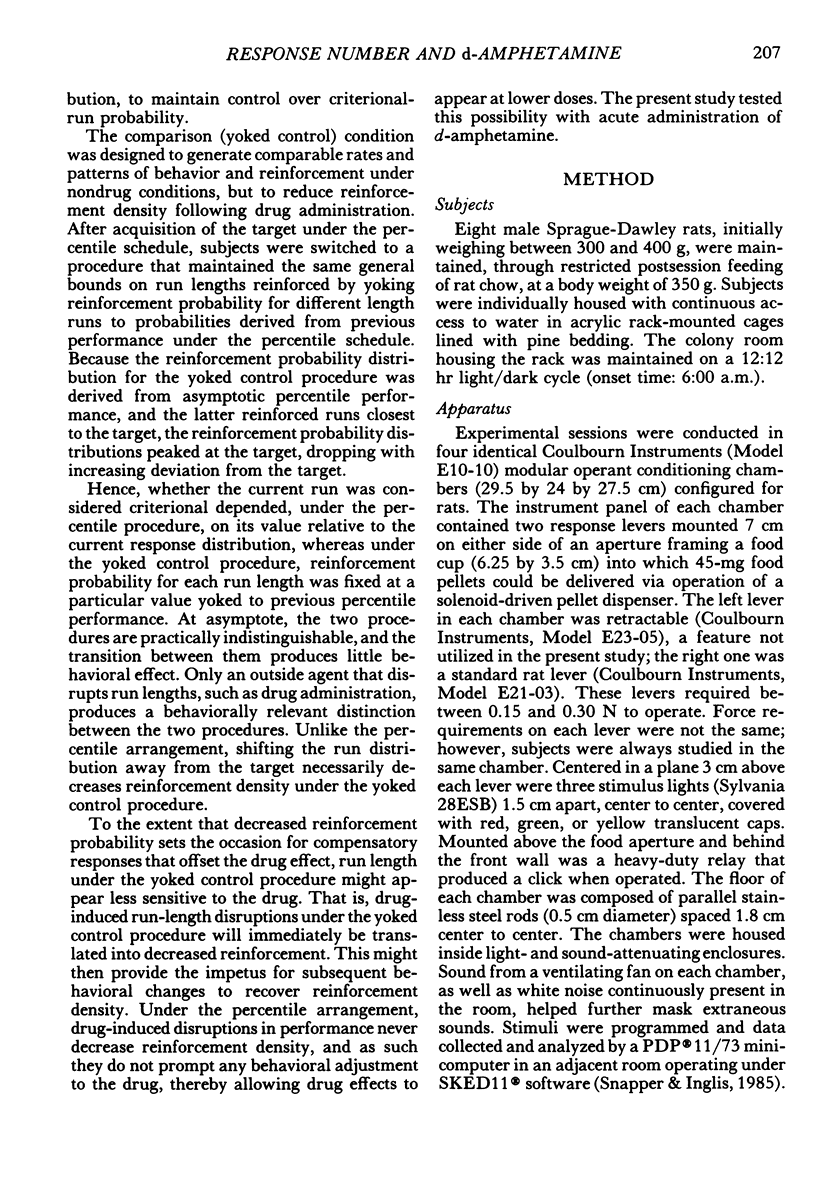
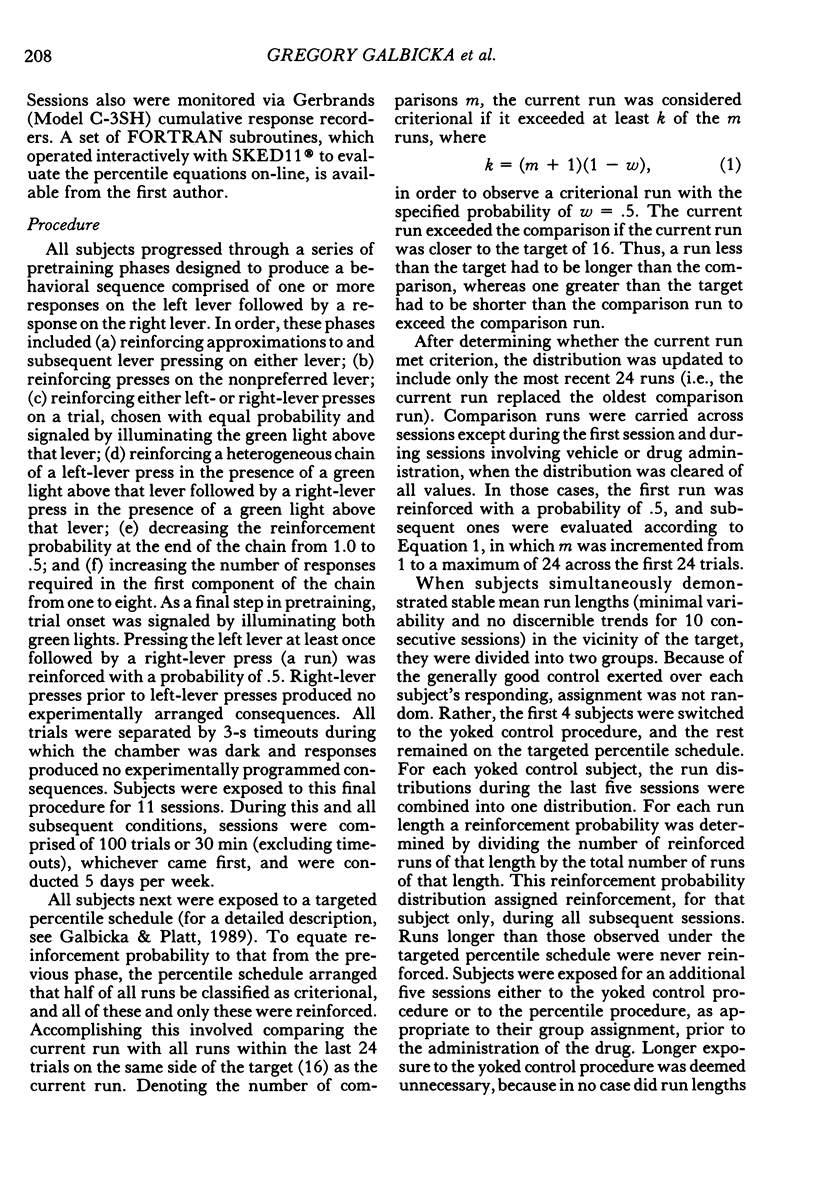
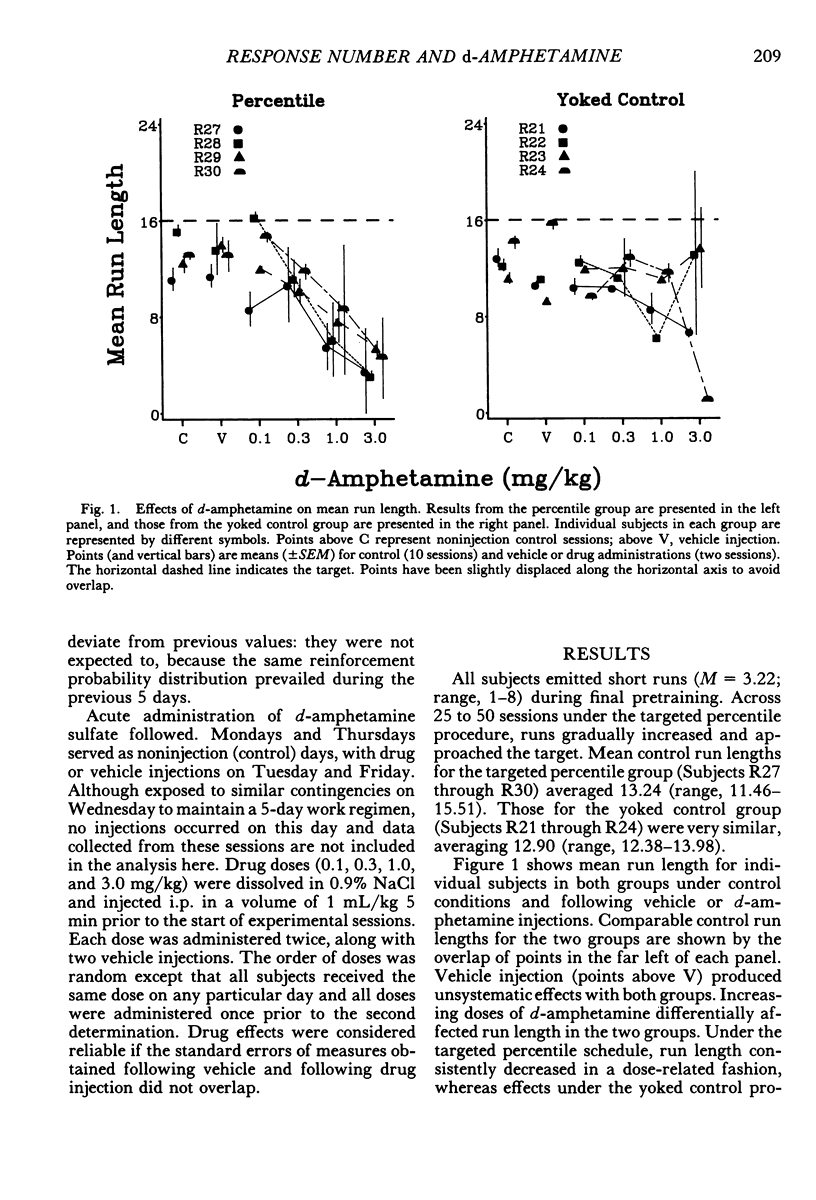

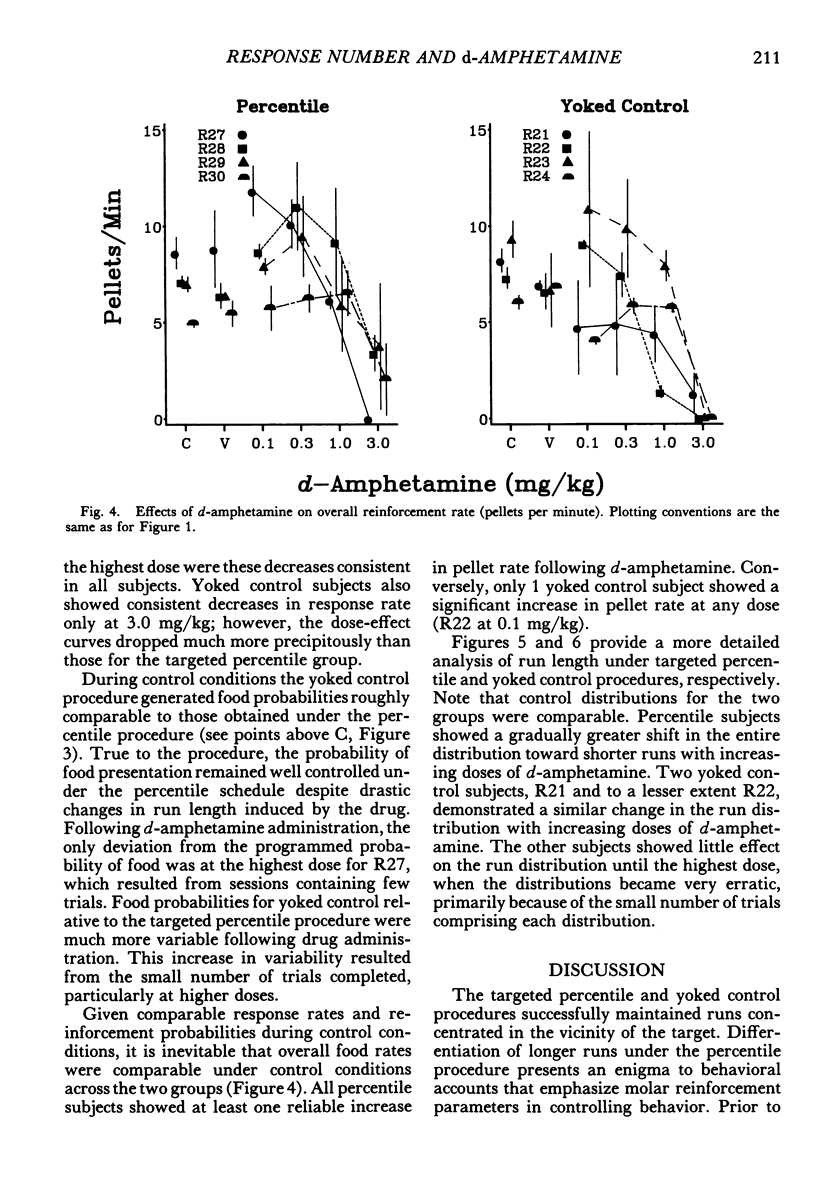
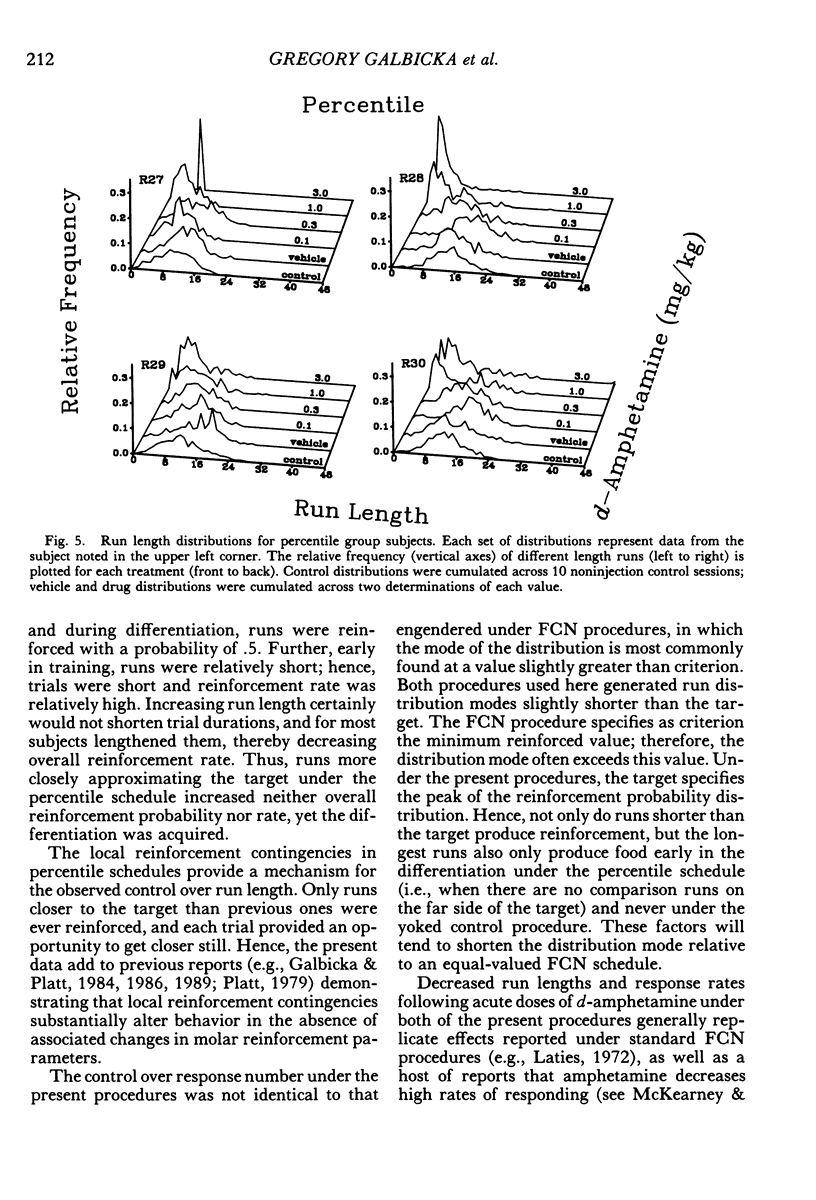
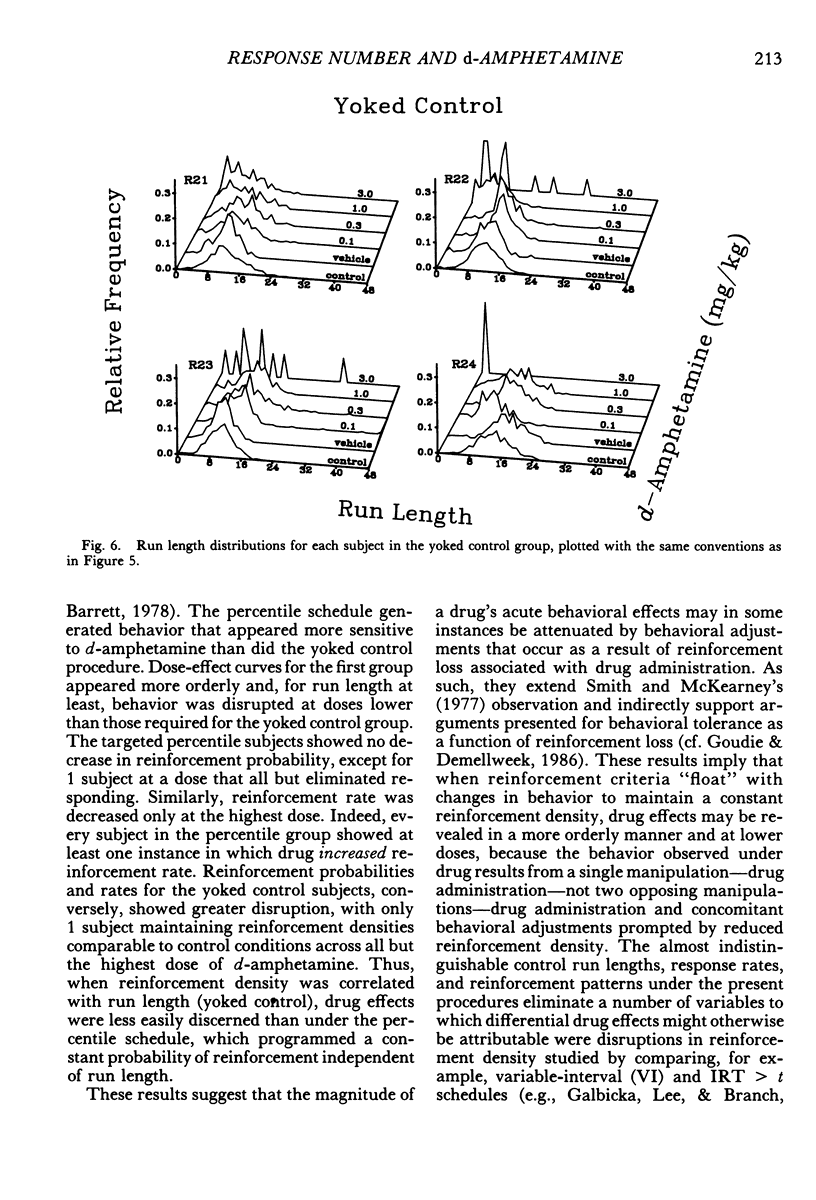

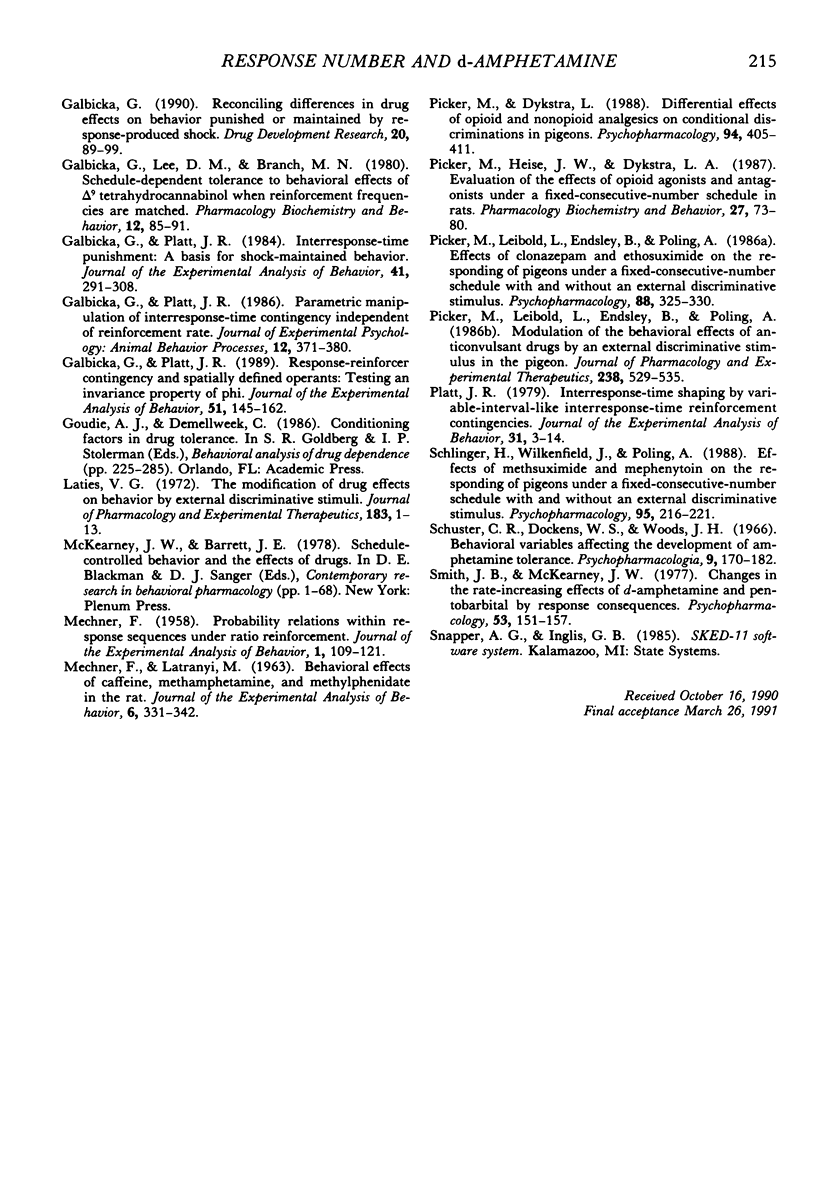
Selected References
These references are in PubMed. This may not be the complete list of references from this article.
- Bronson M. E., Moerschbaecher J. M. Effects of mu, kappa and sigma opioids on fixed consecutive number responding in rats. Pharmacol Biochem Behav. 1987 Aug;27(4):733–743. doi: 10.1016/0091-3057(87)90201-2. [DOI] [PubMed] [Google Scholar]
- Galbicka G. Differentiating the behavior of organisms. J Exp Anal Behav. 1988 Sep;50(2):343–354. doi: 10.1901/jeab.1988.50-343. [DOI] [PMC free article] [PubMed] [Google Scholar]
- Galbicka G., Lee D. M., Branch M. N. Schedule-dependent tolerance to behavioral effects of delta 9-tetrahydrocannabinol when reinforcement frequencies are matched. Pharmacol Biochem Behav. 1980 Jan;12(1):85–91. doi: 10.1016/0091-3057(80)90420-7. [DOI] [PubMed] [Google Scholar]
- Galbicka G., Platt J. R. Interresponse-time punishment: a basis for shock-maintained behavior. J Exp Anal Behav. 1984 May;41(3):291–308. doi: 10.1901/jeab.1984.41-291. [DOI] [PMC free article] [PubMed] [Google Scholar]
- Galbicka G., Platt J. R. Parametric manipulation of interresponse-time contingency independent of reinforcement rate. J Exp Psychol Anim Behav Process. 1986 Oct;12(4):371–380. [PubMed] [Google Scholar]
- Galbicka G., Platt J. R. Response-reinforcer contingency and spatially defined operants: testing an invariance property of phi. J Exp Anal Behav. 1989 Jan;51(1):145–162. doi: 10.1901/jeab.1989.51-145. [DOI] [PMC free article] [PubMed] [Google Scholar]
- Laties V. G. The modification of drug effects on behavior by external discriminative stimuli. J Pharmacol Exp Ther. 1972 Oct;183(1):1–13. [PubMed] [Google Scholar]
- MECHNER F., LATRANYI M. Behavioral effects of caffeine, methamphetamine, and methylphenidate in the rat. J Exp Anal Behav. 1963 Jul;6:331–342. doi: 10.1901/jeab.1963.6-331. [DOI] [PMC free article] [PubMed] [Google Scholar]
- Mechner F. Probability Relations within Response Sequences under Ratio Reinforcement. J Exp Anal Behav. 1958 Apr;1(2):109–121. doi: 10.1901/jeab.1958.1-109. [DOI] [PMC free article] [PubMed] [Google Scholar]
- Picker M., Dykstra L. A. Differential effects of opioid and nonopioid analgesics on conditional discriminations in pigeons. Psychopharmacology (Berl) 1988;94(3):405–411. doi: 10.1007/BF00174698. [DOI] [PubMed] [Google Scholar]
- Picker M., Heise J. W., Dykstra L. A. Evaluation of the effects of opioid agonists and antagonists under a fixed-consecutive-number schedule in rats. Pharmacol Biochem Behav. 1987 May;27(1):73–80. doi: 10.1016/0091-3057(87)90479-5. [DOI] [PubMed] [Google Scholar]
- Picker M., Leibold L., Endsley B., Poling A. Effects of clonazepam and ethosuximide on the responding of pigeons under a fixed-consecutive-number schedule with and without an external discriminative stimulus. Psychopharmacology (Berl) 1986;88(3):325–330. doi: 10.1007/BF00180833. [DOI] [PubMed] [Google Scholar]
- Picker M., Leibold L., Endsley B., Poling A. Modulation of the behavioral effects of anticonvulsant drugs by an external discriminative stimulus in the pigeon. J Pharmacol Exp Ther. 1986 Aug;238(2):529–535. [PubMed] [Google Scholar]
- Platt J. R. Interresponse-time shaping by variable-interval-like interresponse-time reinforcement contingencies. J Exp Anal Behav. 1979 Jan;31(1):3–14. doi: 10.1901/jeab.1979.31-3. [DOI] [PMC free article] [PubMed] [Google Scholar]
- Schlinger H., Wilkenfield J., Poling A. Effects of methsuximide and mephenytoin on the responding of pigeons under a fixed-consecutive-number schedule with and without an external discriminative stimulus. Psychopharmacology (Berl) 1988;95(2):216–221. doi: 10.1007/BF00174512. [DOI] [PubMed] [Google Scholar]
- Schuster C. R., Dockens W. S., Woods J. H. Behavioral variables affecting the development of amphetamine tolerance. Psychopharmacologia. 1966;9(2):170–182. doi: 10.1007/BF00404721. [DOI] [PubMed] [Google Scholar]
- Smith J. B., McKearney J. W. Changes in the rate-increasing effects of d-amphetamine and pentobarbital by response consequences. Psychopharmacology (Berl) 1977 Jul 18;53(2):151–157. doi: 10.1007/BF00426485. [DOI] [PubMed] [Google Scholar]


